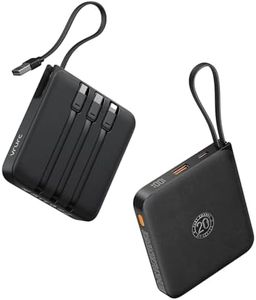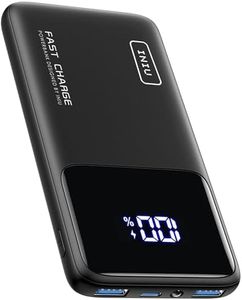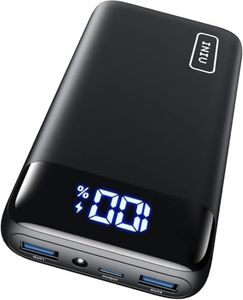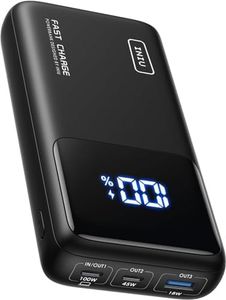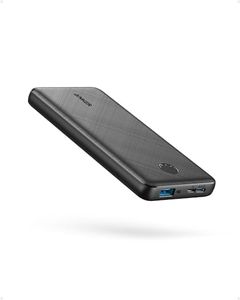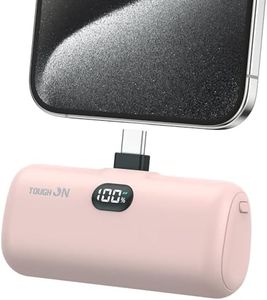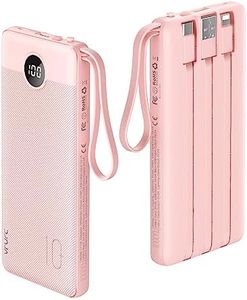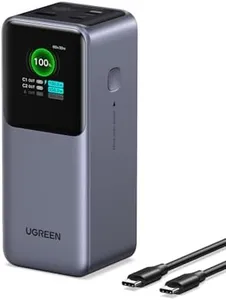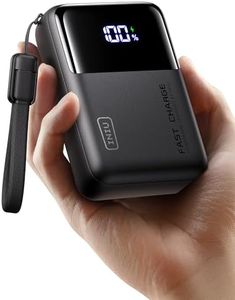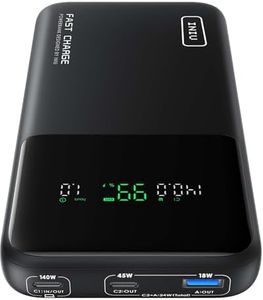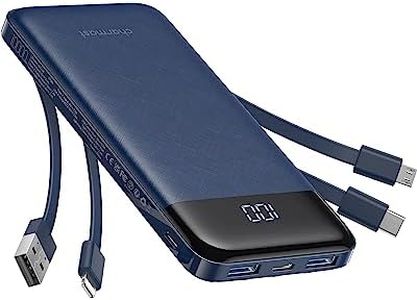We Use CookiesWe use cookies to enhance the security, performance,
functionality and for analytical and promotional activities. By continuing to browse this site you
are agreeing to our privacy policy
10 Best Portable Power Charger
From leading brands and best sellers available on the web.Buying Guide for the Best Portable Power Charger
Choosing a portable power charger (also called a power bank) can be confusing because there are so many options and specs to consider. The right charger for you depends on what devices you want to charge, how often you’ll use it, and where you’ll be using it. Think about your daily routine: do you just need a backup for your phone on a busy day out, or do you want something that keeps multiple devices running during travel or emergencies? Understanding a few key features can help you buy a power bank that fits your lifestyle and meets your needs.Capacity (mAh)Capacity, measured in milliampere-hours (mAh), tells you how much charge the power bank can hold. Higher capacity means it can charge your devices more times before needing to be recharged itself. Small chargers (around 2,000–5,000 mAh) are lightweight and perfect for a quick phone top-up, but won’t fully recharge most smartphones. Mid-range chargers (10,000–15,000 mAh) can fully charge a phone a few times and are good for daily use or short trips. High-capacity chargers (20,000 mAh and above) are heavier and bulkier but can recharge laptops or several devices multiple times, making them ideal for travel or emergencies. To pick the right capacity, think about how many times you want to recharge your devices before plugging the charger in again and how much weight you’re willing to carry.
Output Power (Watt/Amps/Voltage)This spec tells you how quickly the charger can transfer energy to your device, usually shown as output current (measured in Amps) or power (in Watts). Lower output (1 Amp or 5 Watts) is suitable for small devices and overnight charging. Standard smartphone charging usually works with 2 Amps (10 Watts). Fast-charging (sometimes listed as 2.4 Amps, 18 Watts, or higher) powers up devices much quicker and is especially helpful for tablets, large phones, or if you’re often in a hurry. Think about whether you need fast charging by considering how quickly you want your devices ready to use.
Number and Type of Output PortsPower banks come with different numbers of output ports, and often with various types like USB-A, USB-C, or even AC outlets. One port is fine if you want to charge just one device at a time, while two or more can power up multiple gadgets at once, which is useful for families or heavy tech users. USB-C is becoming the new standard and works with most modern devices, whereas USB-A is more common with older gadgets. Some power banks even have built-in cables for convenience. Pick based on your typical devices and how many you want to charge at once.
Size and WeightThe size and weight affect how easy the charger is to carry around. Slim, lightweight models slip easily into a pocket or small purse, great for daily errand runs or nights out. Larger models may not fit in your pocket but can keep bigger devices powered for days, making them better for camping, travel, or emergencies. Your choice should depend on how often you’ll carry it and if portability or longer-lasting power matters more for you.
Input Charging SpeedThis tells you how quickly the power bank itself will recharge once it's empty. A higher input speed (measured in Amps or Watts) means less wait time before it’s ready to go again. Some chargers accept power more quickly through a USB-C or fast-charging port, while others take several hours via a regular USB plug. If quick turnaround is important to you—say, for frequent travelers—look for fast input charging.
Safety FeaturesSafety features such as overcharge protection, short-circuit prevention, and temperature control protect both your charger and your devices from damage. These features are especially important if you’ll leave the charger plugged in overnight or use it with expensive devices. Always check if the power bank mentions any built-in protection to keep your gadgets safe.
